- Home
- Quizzes
- My Quiz Activity
- Newsletters
- Sports Betting
- MY FAVORITES
- Add Sports/Teams
- SPORTS
-
NFL
- NFL Home
- Arizona Cardinals
- Atlanta Falcons
- Baltimore Ravens
- Buffalo Bills
- Carolina Panthers
- Chicago Bears
- Cincinnati Bengals
- Cleveland Browns
- Dallas Cowboys
- Denver Broncos
- Detroit Lions
- Green Bay Packers
- Houston Texans
- Indianapolis Colts
- Jacksonville Jaguars
- Kansas City Chiefs
- Las Vegas Raiders
- Los Angeles Chargers
- Los Angeles Rams
- Miami Dolphins
- Minnesota Vikings
- New England Patriots
- New Orleans Saints
- New York Jets
- New York Giants
- Philadelphia Eagles
- Pittsburgh Steelers
- San Francisco 49ers
- Seattle Seahawks
- Tampa Bay Buccaneers
- Tennessee Titans
- Washington Commanders
-
MLB
- MLB Home
- Arizona Diamondbacks
- Atlanta Braves
- Baltimore Orioles
- Boston Red Sox
- Chicago White Sox
- Chicago Cubs
- Cincinnati Reds
- Cleveland Guardians
- Colorado Rockies
- Detroit Tigers
- Houston Astros
- Kansas City Royals
- Los Angeles Angels
- Los Angeles Dodgers
- Miami Marlins
- Milwaukee Brewers
- Minnesota Twins
- New York Yankees
- New York Mets
- Oakland Athletics
- Philadelphia Phillies
- Pittsburgh Pirates
- San Diego Padres
- San Francisco Giants
- Seattle Mariners
- St. Louis Cardinals
- Tampa Bay Rays
- Texas Rangers
- Toronto Blue Jays
- Washington Nationals
-
NBA
- NBA Home
- Atlanta Hawks
- Boston Celtics
- Brooklyn Nets
- Charlotte Hornets
- Chicago Bulls
- Cleveland Cavaliers
- Dallas Mavericks
- Denver Nuggets
- Detroit Pistons
- Golden State Warriors
- Houston Rockets
- Indiana Pacers
- Los Angeles Clippers
- Los Angeles Lakers
- Memphis Grizzlies
- Miami Heat
- Milwaukee Bucks
- Minnesota Timberwolves
- New Orleans Pelicans
- New York Knicks
- Oklahoma City Thunder
- Orlando Magic
- Philadelphia 76ers
- Phoenix Suns
- Portland Trail Blazers
- Sacramento Kings
- San Antonio Spurs
- Toronto Raptors
- Utah Jazz
- Washington Wizards
-
NHL
- NHL Home
- Anaheim Ducks
- Arizona Coyotes
- Boston Bruins
- Buffalo Sabres
- Calgary Flames
- Carolina Hurricanes
- Chicago Blackhawks
- Colorado Avalanche
- Columbus Blue Jackets
- Dallas Stars
- Detroit Red Wings
- Edmonton Oilers
- Florida Panthers
- Los Angeles Kings
- Minnesota Wild
- Montreal Canadiens
- Nashville Predators
- New Jersey Devils
- New York Islanders
- New York Rangers
- Ottawa Senators
- Philadelphia Flyers
- Pittsburgh Penguins
- San Jose Sharks
- Seattle Kraken
- St. Louis Blues
- Tampa Bay Lightning
- Toronto Maple Leafs
- Vancouver Canucks
- Vegas Golden Knights
- Washington Capitals
- Winnipeg Jets
- NCAAF
- NCAAM
- Boxing
- Entertainment
- Lifestyle
- Golf
- MMA
- Soccer
- Tennis
- Wrestling
- More Sports
- RESOURCES
- My Account
- YB on Facebook
- YB on Twitter
- YB on Flipboard
- Contact Us
- Privacy Policy
- Terms of Service
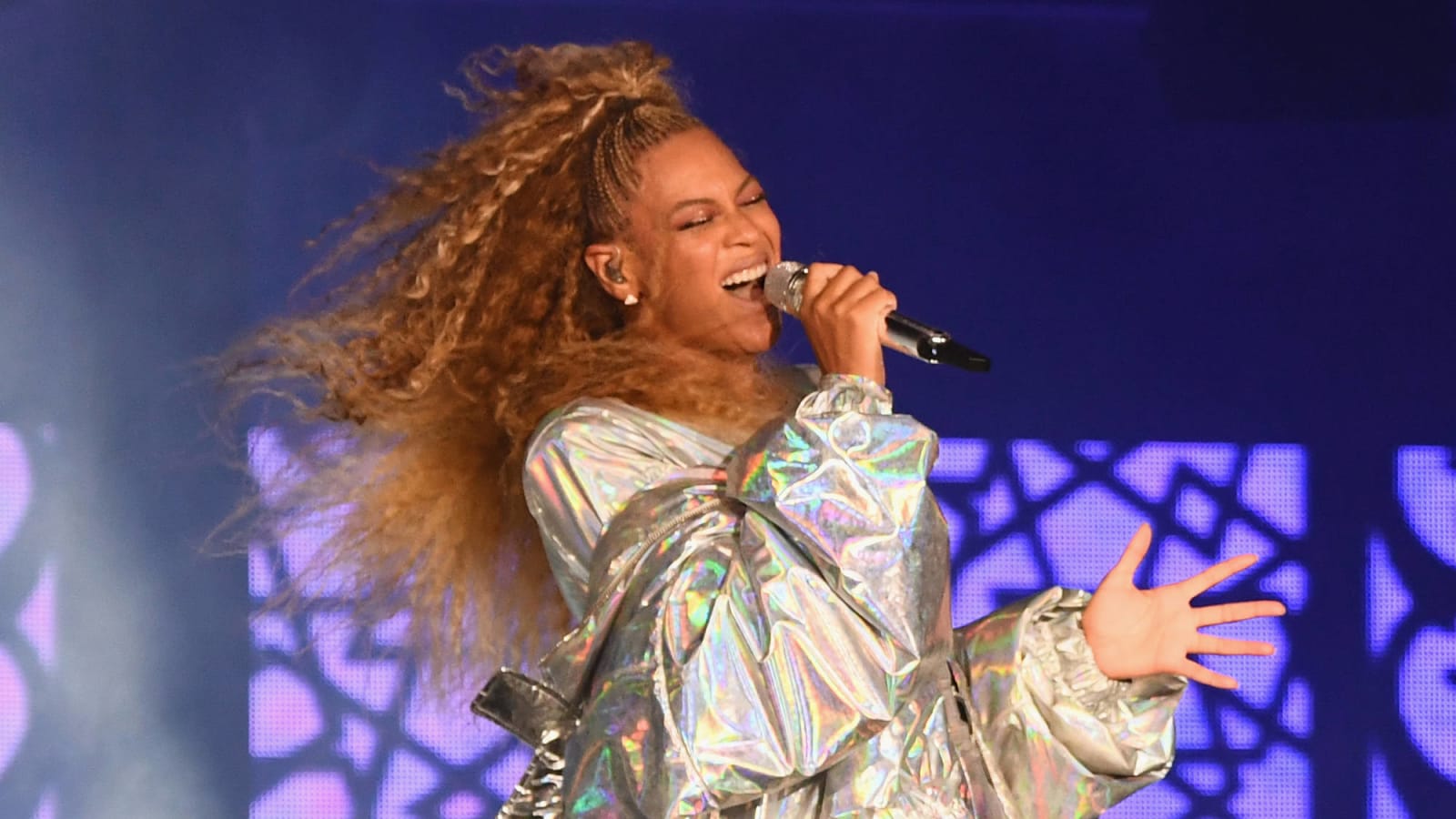
The definitive ranking of every visual album
When Beyoncé surprise released her self-titled record in 2013, the fact that she filmed a music video for every track in secret rumbled the music industry, and soon the phrase "visual album" became commonplace. Soon, artists (including Queen Bey herself) tried replicating the formula, merging their grand audio ambitions with visuals, narratives, and long-form storytelling that was intended to add a new dimension to a musician's overall artistic statement.
While the terminology is new, "visual albums" by definition have been around for decades. A single-album experience with either a litany of music videos or a cinematic counterpart? "A Hard Day's Night" fits that criteria, which means Blondie's 1979 record "Eat to the Beat" also comes into play, as the band filmed a video for every single track.
Yet if we're going to make a definitive ranking of every visual album ever, we have to have some criteria. To make this elite list, the visual in question has to total more than a half-hour (sorry, Arcade Fire's "Scenes from the Suburbs"), it has to have general availability/circulation (which cuts JPEGMAFIA's "Darkskin Manson", "333" by Green Jellÿ, and Manu Gavassi's region-restricted "GRACINHA"), it's more purely artist-driven instead of a mere star vehicle (which means musician-oriented films with soundtracks like "A Star is Born" and "Burlesque" get the boot), concert films are their own category (thus disqualifying mostly-live treatments like Alice Cooper's "Welcome To My Nightmare" and Metallica's "Through the Never"), and the visual album in question has to be a new standalone statement (thus cutting The Village People's "Can't Stop the Music" due to its reliance on old hits and other artists' music).
So what are you waiting for? Open your ears, eyes, and heart to the definitive ranking of every visual album ever.
#50: R. Kelly – "Trapped in the Closet" (2005-2012)
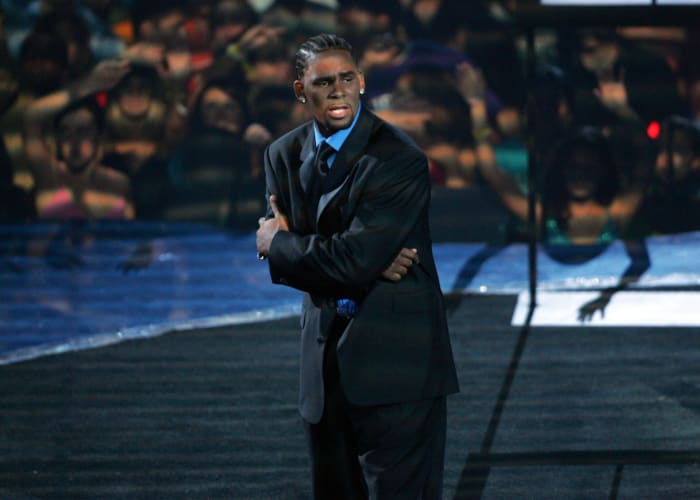
Initially a success due to its sheer theatrical insanity, the endlessly (and easily) mockable R&B opera from disgraced singer R. Kelly is even worse than you remember. What starts as a plotline involving a man (Kelly's Sylvester) not wanting to get caught in a woman's affair soon turns into a seemingly-endless story involving mobsters, little people, and nervous eye twitches. While its first "chapters" could arguably be described as camp, the later chapters, which Kelly would dole out over seven years, were shot on flimsy green screen and got tackier, wackier, and even more boring as time went on. While Kelly expects us to care about the characters, hearing that same piano riff for 133 minutes is close to torture. The only good thing to come out of it was "Weird Al" Yankovic's spot-on riff "Trapped in the Drive-Thru", which still had the grace to end before hitting the 11-minute mark.
#49: Sia – "Music" (2021)
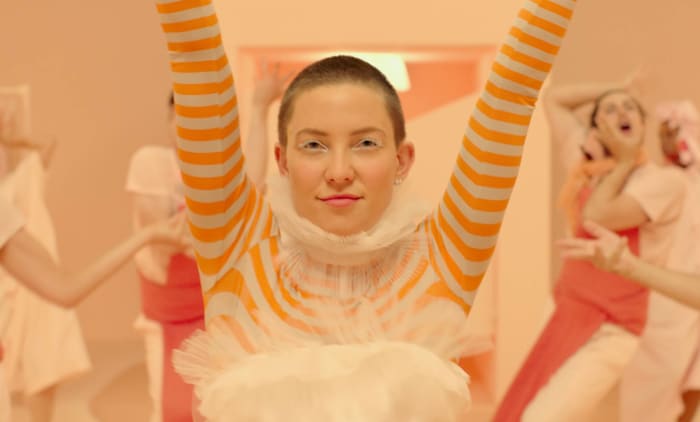
Written, directed, and featuring original songs by Sia, "Music" is one of the most misguided passion projects ever greenlit. While Sia built her mainstream success on her pro songwriting chops and visually arrested music videos featuring dancer Maddie Ziegler, casting the neurotypical Ziegler as a neurodivergent girl drew immediate criticism. The girl's name is Music, and the film's many musical numbers take place inside her head, often on monochromatic sets with flat, unengaging cinematography. The non-musical sequences have Kate Hudson's drug-dealing character Zu (short for Kazu, mind you) deal with the responsibilities of taking care of Music while running errands for her dealer (Ben Schwartz in cornrows for some reason), and the whole thing is just a mess. Add in Sia making a cameo as herself, and it's clear that "Music" is one of the most overly indulgent, horrendous projects a musician has ever tied themselves to.
#48: Karmin – "Leo Rising" (2016)
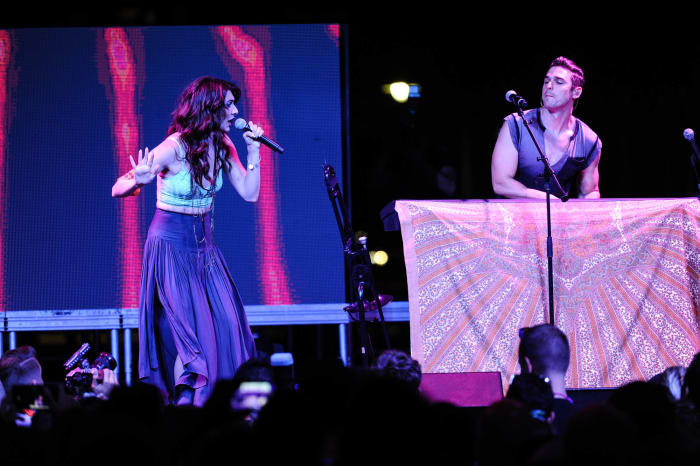
In 2012, the Boston pop-rock duo Karmin snagged a one-off hit with the song "Brokenhearted", introducing the world to Nick and Amey Renee Noonan's big-chorus aesthetic. For their second (and what turned out to be their final) album, "Leo Rising", the group created the "couch videos," i.e., a video of them singing every song from a couch-styled perspective. Sometimes they're sitting down in a courtyard. Sometimes they're in the back of a car. Once they're in swimsuits on the beach. There's a different location for each track, and while there are edits and slow-mo shots, the duo wildly overestimated how compelling watching two people sitting is. The music is boppy and fun, but this low-budget idea, unfortunately, has painfully little impact—no wonder the group disbanded after this record's release.
#47: Prince – "Under the Cherry Moon" (1986)
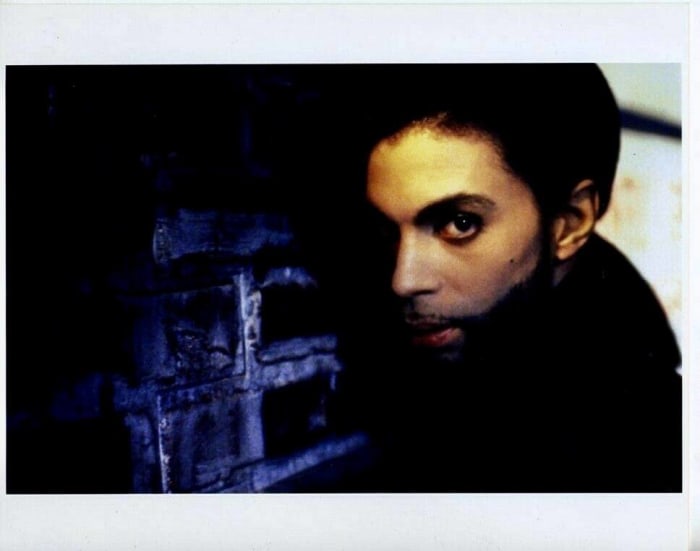
Prince's entire narrative filmography is a curious beast. While he is and always will be one of the best live musicians ever to perform, Prince Rogers Nelson as an actor (and screenwriter and director) leaves much to be desired. Prince plays a gigolo on the French Riviera for his second narrative feature (and directorial debut), trying to woo a young shipping heiress (played with conviction by Kristin Scott Thomas in her feature debut). It's melodramatic, has humor that only Prince finds funny (i.e., the "wrecka stow" debacle), and gives Prince his own over-the-top death scene. The only segments that work, unsurprisingly, are the musical numbers. Prince was always a dynamic performer, and the set pieces for "Girls & Boys" and "Kiss" give the film enough pop spice to keep viewers engaged, but far from enough to save "Under the Cherry Moon" from winning all the Razzie Awards it deservedly received.
#46: Animal Collective – "Tangerine Reef" (2018)

Baltimore's experimental pop group Animal Collective are no strangers to attaching wild visuals to their genre-bending music, and "Tangerine Reef" isn't their first visual album. However, this hour-long feature that depicts the beauty of the coral reefs without the aid of visual effects should've been more arresting. With lingering, minutes-long, unbroken shots of reef life set against some of the group's sleepiest music to date, "Tangerine Reef" is an astoundingly dull experience, one where even the use of various intoxicants may not help one's enjoyment of the film. While noble in intent, "Tangerine Reef" is all of Animal Collective's worst tendencies boiled down to a single project.
#45: Frank Ocean – "Endless" (2016)

The release of "Endless" is surrounded by controversy, as Ocean somewhat publicly battling with his label Def Jam over the release of his heavily anticipated new record. "Endless", a visual album, was released on Apple Music to help fill out his Def Jam contract, and the following day he dropped his legendary "Blonde" album on his own label, angering Def Jam execs. While "Blonde" was instantly considered a classic, the release of that record immediately overshadowed the impact of "Endless", and while it is very much considered the lesser of the two releases, years of distance have let fans appreciate the visual album's sparse pop sensibilities. While "Endless" and "Blonde" are very much aural cousins to each other, "Endless" completely fails the "visual" part of being a "visual album," as this film consists of nothing but black and white footage of Ocean building a staircase. Fans can certainly parse through the film for meaning or perhaps view it as a definitive tell-off to a mega-corporate conglomerate, but as a stepping stone to his masterpiece, "Endless" ended up feeling like an afterthought, and its visual certainly plays like one.
#44: Todrick Hall – "Forbidden" (2018)
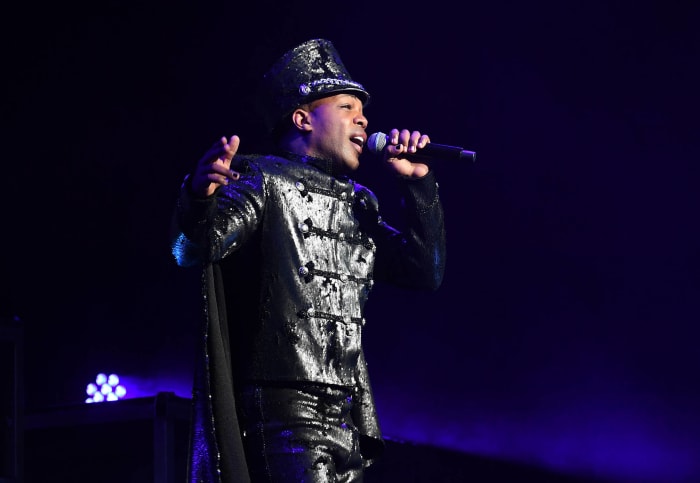
Todrick Hall is very used to doing what he wants by having few people tell him "no." While this means the singing, dancing, and always-online personality has been fiercely independent, it also means he's able to snag superstar appearances for projects with half-baked ideas. "Forbidden", his second visual album, tries to make a too-obvious point about oppression by flipping binaries. Set in the fictional town of Nacirema Falls, where every couple is Black and gay, "straightophobia" is frowned upon, and a white kid walking in the neighborhood is needlessly gunned down by a Black police officer with no consequences. As a societal critique, it feels forced, and when shoe-horned in between music videos filmed for other singles, it gets even weaker (to say nothing of not one but two songs bragging about his wealth). Snagging big names like Cynthia Erivo, Jenifer Lewis, and Tiffany Haddish is no easy feat, but their talents are lost in this lopsided narrative that's nonetheless presented in bright colors and tight choreography. During the film's dramatic final act, Todrick Hall busts out some of the most passionate vocal takes he's ever recorded, but it's all in service of a story that should've gone through several drafts before ever being filmed.
#43: Fergie – "Double Dutchess: Seeing Double // The Visual Experience" (2017)

Fergie likely didn't intend to take over a decade between releasing solo albums, but after 2006's "The Dutchess" spun off one chart-topping hit after another, she intended her 2017 follow-up to follow suit. Unfortunately, "Double Dutchess" jettisoned all the colorful production work by will.i.am and Polow da Don to instead bring in Venus Brown to oversee a majority of the songs here, creating an album that sounded more trend-chasing than trend-setting. The videos made for the "Seeing Double // The Visual Experience" film rarely, if ever, do anything to elevate the tired choruses here, often giving us generic set pieces that do little to show off Fergie's personality. Exceptions to the rule go to the 11-minute take on "A Little Work" (helmed by the great Jonas Åkerlund) with its insane costumes and overly ambitious personal narrative, as well as the cheeky lover-murdering stop-animation for "Love is Blind". Unfortunately, "Double Dutchess" ended Fergie's rule as a force in the pop world.
#42: Oh Wonder – "22 Break" (2021)

The London duo of Anthony and Josephine Vander West described their fourth full-length album, "22 Break", as a breakup record being recorded by the people in the middle of actually breaking up. In truth, the songs depicting all phases of a relationship (from courtship to bitter regret to acquiescence) make for a genuinely compelling and engaging listen. So why pray tell, is the visual for this record so dull? Filmed on a small budget, most of the "22 Break" film shows Anthony and Josephine doing interpretive dances in forests and beaches, sometimes wearing masks made out of mud and clay and sometimes not. They may feel that the motions and actions are filled with meaning, but when you are filming a series of black and white videos that rarely change location, as a viewer, it can become very monotonous very quickly. Better experienced as an "album" than a "visual album" proper.
#41: Suede – "Night Thoughts" (2016)

For the London-bred band Suede, the U.K. has always been their home and has always been their market, rarely if ever pushing for the kind of U.S. college radio play where most British acts find crossover success. While the band's own fraught biography is worthy of a full-length documentary, Suede's focal point remains vocalist and songwriter Brett Anderson. He intended "Night Thoughts" to be a more dramatic, less pop-friendly slice of life record. The corresponding film for "Night Thoughts" is thus very dramatic but very loosely interpretive. We see some light crimes and suıcide attempts, expressive nighttime karaoke outside of a loved one's flat, and a few striking touches of visual flair. Yet the "Night Thoughts" visual result is less impactful than the band was probably hoping for due to a few repeated locations and a lack of overall clarity on the concept at hand. It's assuredly watchable but also easily forgettable. Some "Night Thoughts" are best left alone.
#40: Talking Heads – "True Stories" (1986)

Even to this day, "True Stories" remains a divisive film. Talking Heads' de facto leader David Byrne very much wanted to explore strange visuals and idiosyncratic beats with his series of interconnected vignettes set in Texas, with the band releasing "studio versions" of all the new songs featured here even if the cast version (not sung by the Talking Heads) wasn't made fully available until decades after the fact. While many of the actors here are game for this wild experiment (especially John Goodman), some view the movie as a collection of quirky characters being their quirky selves while others feel Byrne's interpretation of Southerners is stereotypical to the point of insulting. While the album "True Stories" is rarely in the discussion of the band's best work, certain songs (like "Wild Wild Life" and "People Like Us") remain some of the band's most beloved. An ambitious beast, "True Stories" unfortunately hits a few false notes.
#39: Blondie – "Eat to the Beat" (1979)
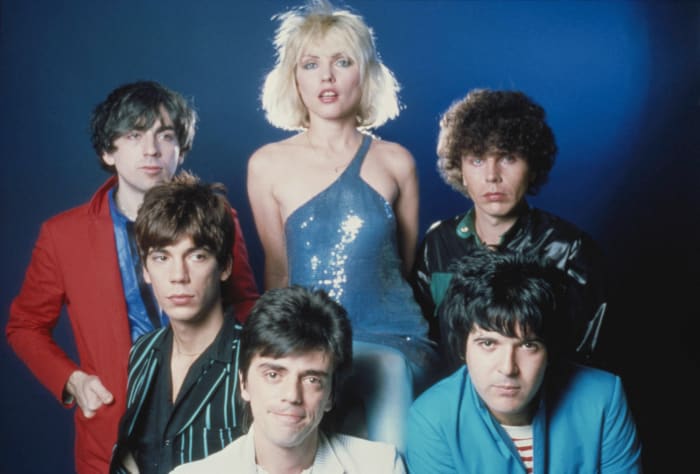
Right as "American Gigolo" was hitting theaters and "Call Me" was taking off in early 1980, the success of the song all but overshadowed the late 1979 release of Blondie's fourth album, "Eat to the Beat". It's a shame, too, because as part of the runup to the promotion for "Eat", Blondie made one of the earlier "true" visual albums by filming a video for every track. As ambitious as this was for the era (MTV didn't even launch until 1981, don't forget), the videos are largely just the band performing in different spots around New York. A photoshoot set here, a warehouse with lights there, etc. It's not gripping viewing, but it is fun. The videos that stand out the most here sometimes do so for the wrong reasons, as the indisputably creepy masks donned during "Shayla" are more haunting than they are endearing. However, watching Debbie Harry try doing the robot during "Atomic" is a sight that must be seen by any Blondie fan of an era. This is some good eats.
#38: Michael Jackson – "Moonwalker" (1988)
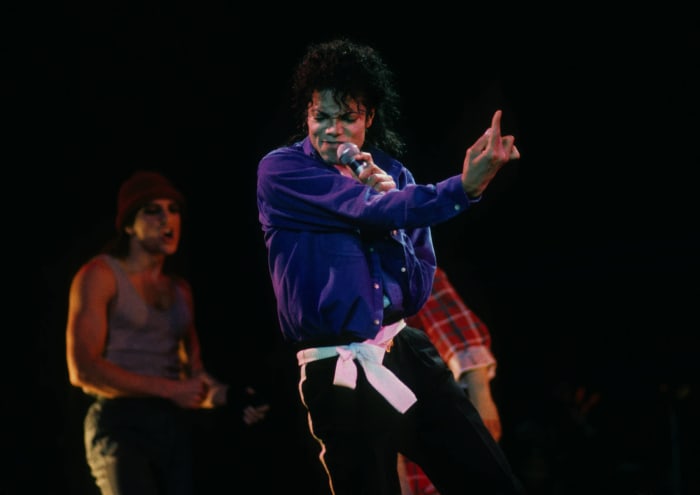
When you are a megastar the size of Michael Jackson, you have enough money to make literally anything happen, and "Moonwalker" is very much the epitome of "anything happening." Used to promote "Bad", his blockbuster follow-up to "Thriller", "Moonwalker" grabs several of Jackson's big-budget music videos and strings them together into something that mixes performance footage, documentary biography, and utterly incomprehensible special effects narratives to create ... a distinct viewing experience. Some of the videos, like the expressive anti-fame rant "Leave Me Alone", remain classics. The deeply upsetting claymation adventure that is "Speed Demon" remains deeply upsetting all the decades later. Yet most bizarre of all is the "conclusion" to the "Smooth Criminal" saga, wherein a violent kid-hitting, heels-rocking criminal played by Joe Pesci must face off against an enraged Jackson, who turns into a giant rocket-firing robot that can fly. Ignoring the middle finger that Jackson gives Paul McCartney with his closing cover of "Come Together" (having bought the Beatles' song catalog just a few years prior), the highlights of "Moonwalker" remain Jackson's dance performances live on stage, which remain impossibly rewatchable to this day. Overall, "Moonwalker" can best be described as a "mixed bag" of a theatrical event.
#37: The Beatles – "Help!" (1965)
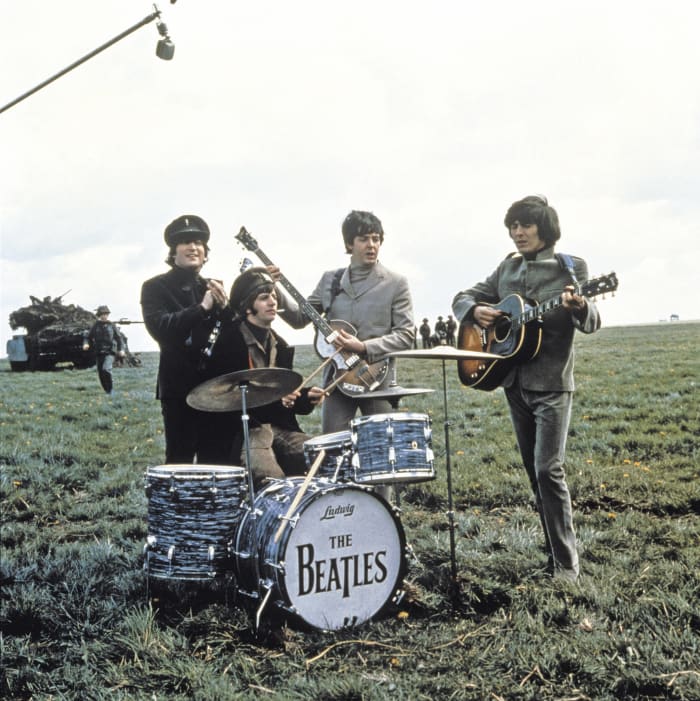
If "A Hard Day's Night" qualifies for this list, then so does "Help!", but if we're being honest with ourselves, "Help!" is here almost as a charity case. While Richard Lester directed both live-action Beatles films, "A Hard Day's Night" exists as a great album and an iconic piece of filmmaking. "Help!" is mainly remembered for its soundtrack, as not many people recalled an entire theatrical feature about a cult trying to kidnap Ringo to obtain a ring he's wearing. Allegedly the Fab Four were rightly annoyed by the new, more slapstick direction this feature took because for all the additional hijinks we see on screen, there are that many fewer songs performed. Often cited as an early precursor to music videos by having each song performed in a location almost outside of the film's plot itself, "Help!" as a film does little to enhance the songs that make up "Help!" the album. No wonder the mop tops never attempted something on this level again.
#36: Noah and The Whale – "The First Days Of Spring" (2009)

Following the breakup of Noah and The Whale's frontman Charlie Fink and Laura Marling, Fink put all of his emotions into "The First Days of Spring", his band's second full-length album, which also included a visual counterpart that addressed the breakup somewhat directly. The best part about the visual is the cinematography, in which beautifully-framed shots radiate with a Noah Baumbach-styled intimacy. The songs in question have propulsion, but the album's self-pitying lyrics and the main couple's deeply unsympathetic portrayal means that this "Spring" ends up feeling quite cold.
#35: Melanie Martinez – "K-12" (2019)

Having firmly established her fan base with the "Cry Baby" visual album in 2015, former "The Voice" contestant Melanie Martinez was her own bona fide star, and she continued bringing the Cry Baby's character to life with the much more ambitious "K-12" visual album. More confidence with her direction and upping the budget helps bring the production values to life on this project, but the songs end up being the weakest aspect of "K-12". In what's becoming increasingly commonplace in her songwriting, she adopts overly-obvious metaphors to get her point across, often dropping f-bombs for edginess, which at times works but gets monotonous after sustained use. When the music and visuals coalesce around a specific theme, as they do on the predatory relationship that is the center of "Teacher's Pet", Martinez achieves real catharsis. Yet most of the film, including its deeply unengaging interstitial scenes between songs, shows that bigger isn't always better for Martinez's grand artistic vision.
#34: The Monkees – "Head" (1968)
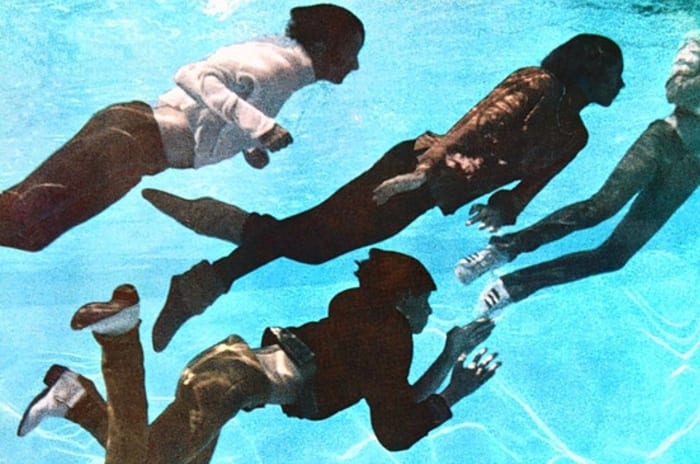
If The Beatles' can have "Help!", then let The Monkees have "Head", a strange acid trip of a film that doesn't make a lick of sense. Directed by Bob Rafelson with a screenplay co-written by an admittedly-drugged-out Jack Nicholson, "Head" is a series of scenes that just so happens to have The Monkees in them. At one point, they're receiving belly dances, at another, they're in a boxing ring, and later on, they're being sucked up by a vacuum. The Frank Zappa cameo is as random as they come, but what keeps this psychedelic nonsense from going completely off the rails is the music. "Head" isn't even one of The Monkees' best albums, but classics like "Porpoise Song" and the Harry Nilsson song-and-dance lament "Daddy's Song" helped elevate this truly fan-base-destroying acid trip into something bordering beautiful while remaining head-scratchingly illogical.
#33: Todrick Hall – "Straight Outta Oz" (2016)

While Todrick Hall's ambition got the better of him on 2018's "Forbidden", his first visual album "Straight Outta Oz" felt right in his pocket. While his love for "The Wizard of Oz" has been well-documented, "Straight Outta Oz" benefits from giving us a much more personal narrative from Todrick, and telling his life story proves to be more immediately compelling than any of the characters he's created. There are some fun sequences (the standalone single "Low" is both terrible and a banger at the same time), but Tordick's subplot depicting how evil the music industry isn't as dynamic as he wants it to be. In a scene where Nicole Scherzinger plays an executive pressuring him for affection, Hall tries to get away with the line, "You've never touched a boob in your whole life / And she's got two of them!" It's peak cringe, but once you move past Hall's lesser lyrics, this trip to "Oz" proves to be quite the whirlwind.
#32: Prince – "Graffiti Bridge" (1990)

Designed as a sequel to "Purple Rain", Prince allegedly got his bandmates and friends in Morris Day and The Time to join in because this time, Prince would be telling their side of the story instead of painting them as the antagonists. However, the end result is another film where Prince plays "The Kid", and he must battle Day over half ownership of the Glam Slam Club, with Day and co. - who again come off as the main villains. The narrative is deeply confusing and includes everything from George Clinton cameos to Ingrid Chavez's soft-spoken poetry to some horrendously dated scenes of gay panic. Yet despite all these misgivings, the music remains a wild spectacle that may not feature Prince at his all-time best, but at least shows that The Kid has still got it. The humor is again decisively Prince-ian and the numbers from The Time slap, but this remains Prince's show first and foremost. "Elephants & Flowers" is one of his most neglected psychedelic experiments, "The Question of You" is peak balladry, and the sex jam "Joy in Repetition" is one of the Purple One's most lurid and intriguing with sultry, flowing visuals to match. Did the film need to be made in the first place? Probably not, but the musical sequences alone almost make it worth crossing this "Bridge".
#31: Death Cab for Cutie – "Directions: The Plans Video Album" (2006)

Death Cab for Cutie's 2005 album "Plans" marked their major-label debut, which by its nature, of course, inspired some backlash from their ever-loyal indie-rock fanbase. While not necessarily a concession, the band still accepted pitches from anyone to direct a video for any of the record's 11 songs. As such, they ended up with a run of videos that run from hand-drawn animation to lovingly rendered real-life set pieces. The resulting videos are interesting, if not essential. The best of the bunch is Autumn de Wilde's treatment for "Different Names for the Same Thing", where a school band gives the song's crescendo the kind of dramatic push it was calling out for all along. "Directions" may be one of the more timid visual albums out there, but its careful craftsmanship and semi-independent aesthetic makes it a worthy detour.
#30: The Beatles – "Yellow Submarine" (1969)
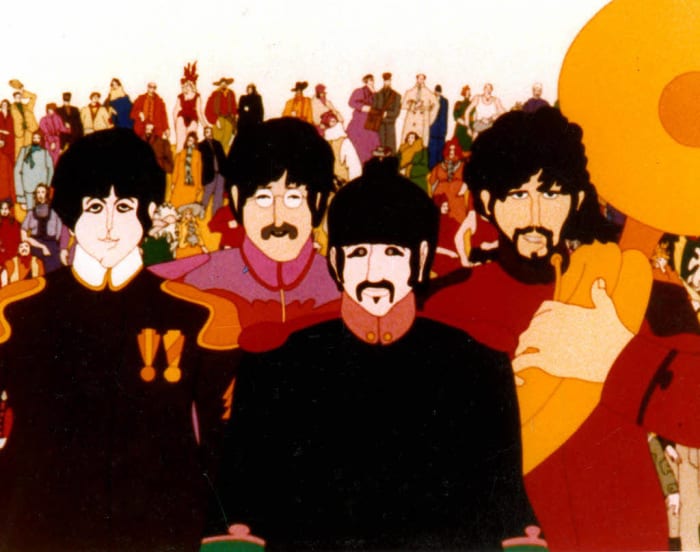
For many, "Yellow Submarine" was a gateway film, being some people's first animated experience and others' first-ever psychedelic experience. It used a litany of new (often fantastic) Beatles songs to tell the story of how The Blue Meanies have taken over Pepperland and are draining it of its music and ... well, the plot isn't the driving point here. People show up for the music and visuals, which director George Dunning delivers in oversaturated spades. Yet the biggest drawback for "Yellow Submarine" is the voice acting of the Fab Four, because the Fab Four didn't provide their own voices, instead of showing up in a goofy live-action shot at the very end while other actors did their best imitation of Paul, John, George, and Ringo. The deadweight of the Beatles' vocal imitators renders many of their scenes flat, leaving "Yellow Submarine" as an obvious cult classic but not the full-bore masterpiece it could've been.
#29: ionnalee – "Everyone Afraid to Be Forgotten" (2018)

When faced with a medical event that could have robbed her of her voice, Sweden's Jonna Lee hurried to make a new album that was designed to be her lasting legacy and possible final testament, "Everyone Afraid to Be Forgotten". Having recorded three whole visual albums under her iamamiwhoami moniker, it was no surprise she would attempt another visual for the completed solo record, but unlike her deeply interpretive other efforts, "Forgotten" would have the semblance of a more linear narrative, with her protagonist "Lee" breaking out of a compound to find a party that everyone has been talking about, only to be shunned by the partygoers and instead bonding with her fellow outsiders. At times, the story is very dry, but its circular nature still has impact. With distinct costuming, some of Lee's angriest songs to date, and her ever-iconic dance moves, "Forgotten" has many memorable moments.
#28: Halsey – "If I Can't Have Love, I Want Power" (2021)

Hanging out with BTS is great and all, but for Halsey's fourth studio album, she deviated hard from the confessional brand of pop music that brought her chart-topping success, instead heading into darker waters by bringing on Trent Reznor and Atticus Ross as songwriters and producers. The album's darker themes called for a darker vision, which is exactly what Halsey served in the album's accompanying film, helmed by noted music video director Colin Tilley. Gothic, lavish, and at times quite graphic, the hour-long feature shows Halsey's protagonist as carrying the burden of pregnancy but also falls under the spell of sensual witchcraft (courtesy of "Loki" star Sasha Lane). While the cinematography is crisp and the outfits by stylist Law Roach sometimes approach pure opulence, the porous and unsure narrative means the music and costumes do most of the film's heavy lifting. We're not complaining, but this worthwhile visual companion could've been a lot more loved if it had a lot more power.
#27: GWAR – "Phallus In Wonderland" (1992)

How does one even begin to describe the depraved nature of "Phallus in Wonderland"? Gȯry viȯlence, commercial parodies, varying degrees of sȯdomy, heavy cȯcaine usage, death by skateboard, and puppets galore dot the insane landscape envisioned by the thrash metal titans. It's all in astoundingly poor taste, but one can only be shocked if they aren't familiar with GWAR, to begin with. This doofy visual album would be even less palatable if it weren't for the fact that the band is clearly reveling in cramming their film with as much sophomoric humor as possible. Even more astonishing is that despite all of this, it was nominated for a Grammy Award. Revolting and incredible in equal measure.
#26: Fall Out Boy – "The Young Blood Chronicles" (2014)

If you want to really dive into the narrative and meaning behind Fall Out Boy's 50-minute feature "The Young Blood Chronicles", wherein the Defenders of the Faith (FOB) are kidnapped by "The Vixens", you certainly can. But in the end, these "Chronicles" are glorious, campy trash. Is Patrick Stump giving us crazy eyes and walking through most of the film with a hook on his hand? Of course, he is. It's a messy narrative filled with ridiculous cameos, but the feverish, color-washed aesthetic can't take away from the fun songs and boisterous insanity on screen. Bound to get your blood a-pumpin'.
#25: Kacey Musgraves – "star-crossed" (2021)

For Musgraves' turn towards more straightforward pop on her 2021 breakup album, she decided to marry the music to a movie that's one part road trip, one part crime narrative, and a whole lot of interesting. The throughline may be slight, and the cameos range from inspired ("RuPaul's Drag Race" Season 13 winner Symone) to curious (Eugene Levy?), but as with the best visual albums, the settings, tones, and overall vibe changes from song-to-song, giving "star-crossed" a lovely flow. Beautifully lensed by Academy Award-nominated cinematographer Matthew Libatique, the many set pieces help give life to the many feelings one had when going through a breakup, from bitterness to acceptance to self-doubt. There are car crashes, comedy bits, and moments of genuine gravitas sprinkled throughout, proving that no man should ever cross this rising star.
#24: Nightwish – "Imaginaerum" (2012)

Quietly ambitious and unabashedly camp, Nightwish's feature-length adaptation of their album "Imaginaerum" is nothing short of a spectacle. Set in the imagination of an old writer about to pass away while his family debates whether to pull the plug, "Imaginaerum" soon unfolds into a tale that features an evil snowman, demonic clowns, and ridiculous narrative sequences that still manage to coalesce into something deeply pleasing even to those who have never even heard of the band. It's overly melodramatic, and some of the more large-scale visual effects feel a bit cheap compared to the smaller-scope ones, but this symphonic metal odyssey can best be described as a hidden gem.
#23: Melanie Martinez – "Cry Baby" (2015)
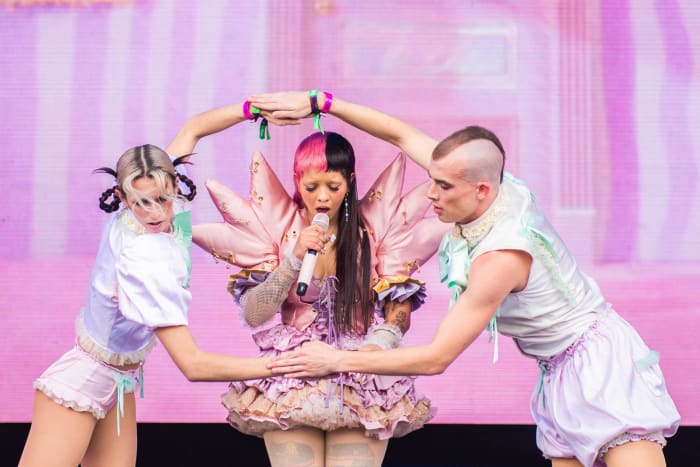
Love her or hate her all you want, but there's no denying that Melanie Martinez's distinct worldview has made her one of the few genuine breakout stars of "The Voice". Embodying the character of Cry Baby, the songs on Martinez's debut album rely on very obvious metaphors that depict the hollowness and darkness that lies behind suburban life. While there isn't much in the way of subtlety to her lyrics, her songs still manage to touch on a certain type of bleakness, buoyed by moody alterna-pop beats. While one may tire of her signature two-tone wigs after a full album's worth of visuals, the production design and clear creative choices help give her songs punch and an overall sense of creepiness. Maybe no one is truly happy in Martinez's tales, but from her plastic doll perspective, she's just telling it like it is.
#22: Janelle Monáe – "Dirty Computer" (2018)

Always referring to her music videos as "emotion pictures," Janelle Monáe is exactly the kind of artist whose vision would lend itself easily to the visual album format. Turning into full "Eternal Sunshine of the Spotless Mind" mode, Monáe plays her longtime character Jane, here having her memories wiped so she can grow up "properly" in heteronormative cyber-society. Each memory is its own standalone music video, and Tessa Thompson plays a former lover who is now an administrator of the process that cleans "dirty computers" such as Jane. While the "Dirty Computer" album is by far Monáe's most obvious attempt at accessible pop music, its best songs so often conjure the best visuals, ranging from the playfully assertive feminism of "Pynk" to the stark militant raps of "Django Jane". Not every individual track works (sorry, "Screwed"), but the overarching narrative and clear star power at play help make this computer feel like an upgrade over most album-length visuals.
#21: Kate Bush – "The Line, the Cross & the Curve" (1993)

Camp to the point of comical, Kate Bush's album-length visual for her 1993 record "The Red Shoes" mixes Dario Argento with Martha Graham to create a silly, colorful, and unbelievably enjoyable romp that features demonology and ballet dancing in equal measure. Written and directed by Bush herself and featuring appearances from actress Miranda Richardson and British stage legend Lindsay Kemp, "The Line, the Cross & the Curve" defies its occasionally low-budget settings to become a larger celebration of Bush's music. Amazingly, it was nominated for the Grammy for Best Long Form Music Video two years after its release due to the slow nature of her label's U.S. promotion cycle. It's worth hunting down, even if its creation and reception are what ultimately lead her to duck out of the public eye for years after the fact. Shame, too, because this obvious hallmark of early-'90s video production feels beautifully time-locked, aging in the best of ways.
#20: Sturgill Simpson – "...Presents Sound & Fury" (2021)

One of the nicest things about the unexpected success of Kentucky-bred country and bluegrass singer Sturgill Simpson is that following all his critical acclaim, he can do pretty much whatever he wants. Case in point? Few would've thought he'd deliver a hyperviolent anime to Netflix with a chugging fuzz-rock soundtrack, but with "Sturgill Simpson Presents Sound & Fury", that's exactly what he did. While there are traces of a storyline with recurring characters across the short feature's many songs, the story is less important than the wild and colorful visuals, ranging from deeply upsetting to pop-art extravagant. "Sound & Fury" feels like a "Mad Max"-meets-steampunk-shogun type of project that just so happens to be littered by endless in-the-red guitar solos and Simpson's gruffest tough-guy vocals to date. We have no notes and no complaints. Proceed with the fury, please.
#19: Florence + The Machine – "The Odyssey" (2016)

What helps elevate "The Odyssey" over other visual albums is its crystal clear throughline. A lovingly rendered tale of family dynamics and pained romance, frontwoman Florence Henderson immerses herself with an interpretive dance troupe to give life to her songs and mostly succeeds despite some dry patches in the narrative. Filmed with a very realistic mise en scène that helps elevate the surrealistic element of dance, the film as a whole is worthwhile, but the pounding rock numbers (specifically the men-tossing-her-around-a-room setpiece for "What Kind of Man" and the surging "Ship to Wreck") are the easy highlights. This "Odyssey" is worth going on.
#18: Kanye West – "Runaway" (2010)

Whether you work in TV or film, designers will tell you the same thing over and over: doing something because it "looks cool" is not a valid design choice because there needs to be a purpose behind that. That message didn't get across to Kanye West, as the film celebrating his heralded "My Beautiful Dark Twisted Fantasy" album is nothing but things looking cool for the sake of looking cool. Think giant slow-motion explosions, a parade with a gigantic bust of Michael Jackson, and model Selita Ebanks playing a woman/phoenix invited to a fancy dinner filled with ballerinas only to scream when she's served a turkey. Yeah, it kind of makes sense, but these pictures and formations help give life to some of the most celebrated music of Kanye's career. "Runaway" is unashamedly indulgent, but when we look back to this particular era of Kanye, few managed to make indulgence look so entertaining.
#17: Tove Lo – "Fairy Dust" (2016)

We hope you like elbows in other people's mouths because Tove Lo's "Fairy Dust" is full of them. The Swedish pop star proudly shows off her sex-positive worldview in her songs and visuals, and "Fairy Dust" is no different, depicting the push and pull of difficult relationships, of loving and fighting, of forgiving and never forgetting, of always waking up within the same car crash. From dance numbers in low-rent hotel parking lots to seeing visions of past lovers in empty city streets, "Fairy Dust" is shot gorgeously, and its loose plot is buoyed by some bracing imagery and some frank scenes of in-your-face sexuality (and elbows in mouths). There have been numerous forward-thinking and provocative pop stars before her, but none quite have the modern edge that Tove Lo has.
#16: Justin Bieber – "PURPOSE : The Movement" (2015)

Justin Bieber's 2015 album "Purpose" was a long-overdue course correction, wherein the Biebs seemed to finally atone for his past bad boy tabloid behavior and wrapped his contrition up in undeniable dance hits. When it came to tying multiple music videos together to make a film, Bieber made perhaps the smartest creative decision in his entire career: he (mostly) stayed off-camera. Outside of an opening and closing ballad where he looks mopey in a desert, most of "PURPOSE : The Movement" is handed off to dancer and choreographer Parris Goebel. Already famous for running the ReQuest and Royal Family dance crews, Goebel's deeply impactful and insanely tight choreography helped make the video for "Sorry" the billion-plus hit that it is, but her work throughout "PURPOSE", including her alternate video for "What Do You Mean?" and the underrated clip for "No Sense", is what gives this visual album its dynamic flair.
#15: Solange – "When I Get Home" (2019)

Solange Knowles has had several careers within her own career, having careened from disposable pop to forward-thinking R&B. Yet 2016's "A Seat at the Table" rewrote her narrative, reintroducing her to the world as a wise-beyond-her-years songwriter with craft and creativity so spare, with much of that soulful insight also bleeding into her distinct music videos. While 2019's "When I Get Home" is arguably a more ambitious record than "Seat" (and having received a far more mixed response than its predecessor), it was accompanied by a wild film that integrated many of the songs into a kaleidoscope of semi-connected images and scenes. Its ambition exceeds its grasp, but when "When I Get Home" focuses on celebrating and recontextualizing Black culture, it finds its true voice. These usually come in the form of contrasts, like when she shows Black cowboys riding broncos next to a white guy doing lasso tricks, immediately making one challenge notions they have of traditional Western history. It's not perfect, but "When I Get Home" points to Solange's continued refinement of her fascinating, confident, and often breathtaking worldview.
#14: The Who – "Tommy" (1975)
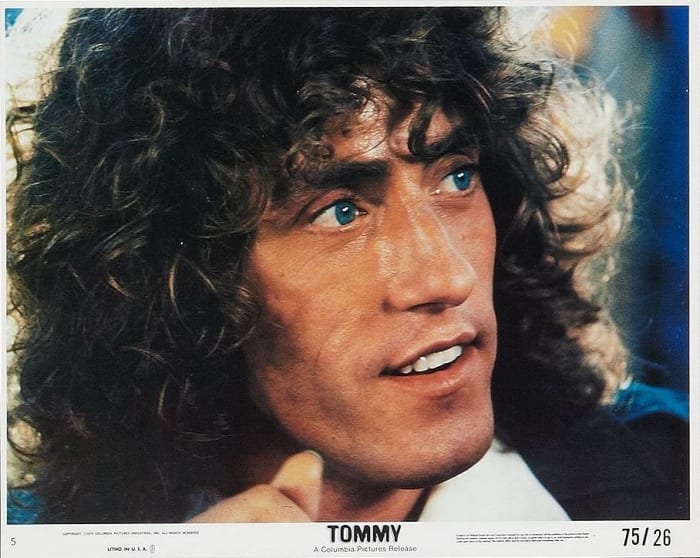
How does one even begin to describe "Tommy"? While the classic 1969 rock opera from The Who tells the story of a "deaf, dumb and blind" boy who eventually becomes a savant at playing pinball and later becomes a cult leader, many wondered if the challenging narrative could even be adapted for film. With the help of writer/director Ken Russell, "Tommy" ended up being a pure psychedelic fantasy with visuals that you won't soon forget. Featuring an Oscar-nominated performance by Ann-Margret as Tommy's mother (who has an unforgettable encounter with some baked beans), the music and production design absolutely sing; the only letdown being that while Roger Daltrey still gives it his all as the title character, many of the other roles are filled out by other actors, and few (even Elton John!) can't hold a candle to the band's originals. Well, that is, of course, except for Tina Turner, who makes "The Acid Queen" her own and is worth the price of admission alone.
#13: iamamiwhoami – "blue" (2014)

After spending two visual albums exploring the darker side of electronic music, Swedish musician Jonna Lee decided that her third visual album would be more akin to a nature film, featuring less narrative and more gorgeous visuals, which "blue" does brilliantly. While Lee's character looks regal against surging waves as she tries to escape from mysterious figures in black morph suits, the soothing blue ocean helps set the tone for the poppiest, brightest, and most accessible music of her career. The playful visual for "Ripple" gives the bouncy track some humorous energy, while the gorgeous rendering of "Blue Blue" mixes narrative, costumes, and natural wonder to powerful effect. While not as immediately ambitious as Lee's other visual albums, there is a primal wonder to "blue" that clearly took months to craft but only seconds to drink in. A soothing balm in tepid times.
#12: TV On The Radio – "Nine Types of Light" (2011)

Framed by head-on interviews of people reciting stories and asking existential questions, TV On the Radio's penultimate album was also blessed with an hour-long visual that is just a series of music videos, all helmed by different directors and playing on various sci-fi themes. Covering a wide spectrum of styles, from crude animation to high-end CGI effects, "Nine Types of Light" really shouldn't work as well as it does, but each clip is of immensely high quality that it's hard to levy many complaints. Serving a "Black Mirror"-lite aesthetic, "Nine Types of Light" posits questions like are we happy with our repetitious routines? Does virtual love feel like the real thing? When we reassemble the memories of our lovers, do they come close to matching the real times we were with them? Couple this with a random Michael Musto cameo, and "Nine Types of Light" ends up being a deeply satisfying mixed media movie that still makes us pine for the band in their prime.
#11: Beyoncé – "Black is King" (2020)

As the 2010s drew to a close, Beyoncé had established herself as an innovator of the "visual album" format, and especially after the culture-shifting release of "Lemonade", she knew she had a lot to live up to. Being cast on the "live-action" remake of "The Lion King" was a big deal, and while she sang on the soundtrack, she also seized the opportunity to create an album that dives deep into her celebration of Black culture and history. "The Lion King: The Gift" should've been an event record but was overshadowed by the film's mega box office intake. Thus, a year after the release of "The Gift", she reconfigured the album to have fewer tie-ins with the Disney film and gave it a brand new visual: "Black is King", arguably her most ambitious visual yet.
While there is a plot of sorts, the main draw of "Black is King" is Beyoncé and her impeccable taste for clothing, scenery, and grand-scale production. In the case of "Black is King", the costuming especially leaves us breathless, integrating centuries of Black fashion and hairstyling and shining it all in a light that's deeply respectful and stunningly contemporary. It may not have the immediate tabloid punch that informed the subtext of "Lemonade", but "Black is King" remains an all-out celebration of Black pride, not only honoring generations of history but also challenging viewers to embrace a powerful Black future. At times, the piano ballads may push the patience of more casual viewers, but all in all, "Black is King" is a crowning achievement.
#10: Animal Collective – "ODDSAC" (2010)

Animal Collective has grown from being lo-fi avant-garde experimenters to freak-folk innovators to hi-fi avant-garde experimenters who just so happen to occasionally coat their songs with a dusting of accessibility. They have built a fanbase on being weird outsiders with stellar musicianship, so it's of no surprise that their first visual album, "ODDSAC", is exactly what you picture it to be. Limbs protruding out of house walls. Sunlight bouncing off of water in a serene bit of psychedelia. Edits so fast and plentiful it sometimes feels like a bad acid trip. Comical masks. Gory melting faces. A squid demon cooking show (we think). Created in tandem with director Danny Perez was putting together, AnCo opted not to release a standalone soundtrack because the band intended the visuals and music to be paired together. There may be a niche audience of people wondering what a Stan Brakhage acid trip would both look and sound like, but for those people, boy, do we have the movie for you.
#9: Beyoncé – "Beyoncé" (2013)

As you've seen already on this list, bands have put out albums where they shot music videos for every single track before, but few of them did it with the high-end polish that Beyoncé brought to her monumental self-titled release. Designed as a project where she could spin off a single at any moment's notice, there are several powerful highlights across this record, from the "Justify My Love"-referencing "Haunted" the sexy roller rink bop that is "Blow". With the help of numerous directors, "Beyoncé" bristles with life: stunning HD colors, exotic locations, ever-shifting vibes, an army of wigs. At some points overly sentimental, at many points overly sexual, "Beyoncé" springs to life in a way few other visual albums do. Some artists on this list might have the same budget that Beyoncé has access to, but few have ever wielded their creative capital (and literal capital) to such satisfying effect.
#8: The Beatles – "A Hard Day's Night" (1964)
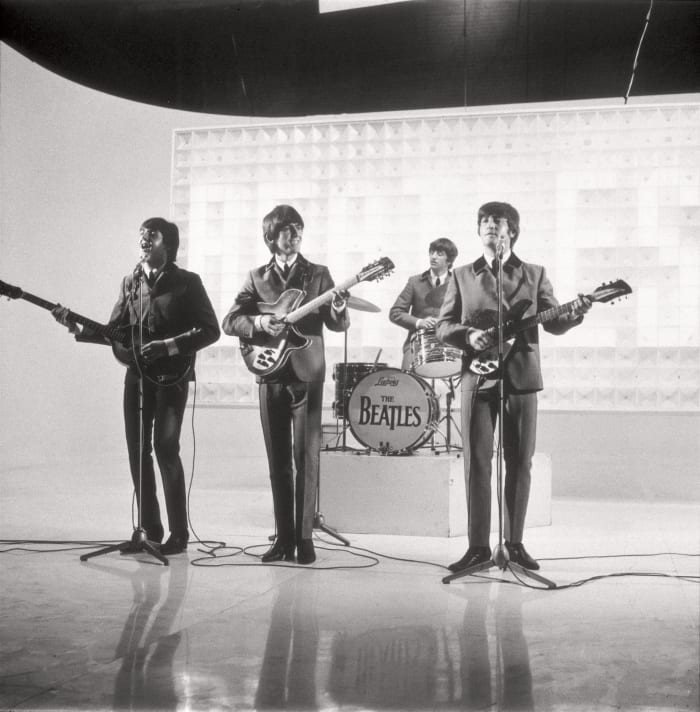
The Beatles dipped their toes into filmmaking several times over, but their first feature remains their unquestioned best. Considered by many to be the first "visual album" of its kind, "A Hard Day's Night" charms effortlessly while remaining casually innovative. With the Fab Four playing caricatures of themselves, there's not much in the way of a plot (The Beatles need to get to the TV studio to record a performance and encounter hijinks along the way) so much as viewers are invited to hang out with the guys and get to know their goofy personalities. Unlike "Help!", which prioritizes the goofy escapades over the music, "A Hard Day's Night" is rife with tunes, and it just so happens that many of these feature the band at their early creative heights. We get "Can't Buy Me Love", "And I Love Her", and a rousing conclusion featuring fans screaming along to "She Loves You". Dexterously filmed, this enjoyable bit of fan service is more stylish and satisfying than you remember.
#7: iamamiwhoami – "bounty" (2013)

When strange, hypnotic videos started showing up on a YouTube channel called iamamiwhoami in late 2009, the name alone begged the question: who is this? There were strange clips of human limbs emerging out of trees and an implied sexuality that caused much controversy. Was this another weird Lady Gaga venture? A new Trent Reznor side project? There were more questions than answers, but when the cryptic clip for electro ballad "b" emerged, online sleuths deduced this was Jonna Lee, a Swedish singer-songwriter who previously tried her hand a Sheryl Crow-esque pop-rock. This turn towards dark electro was surprising, but even after her identity was revealed, the cryptic visuals kept coming, featuring men with paper beards, forests made out of tin foil, and even more aggressively sexual imagery than before.
"bounty", as the project would later be referred to, definitely didn't have the vibe of someone making their first visual album: it exuded confidence and boasted mysterious pull that only industry veterans could achieve. Cardboard boxes became castes to get lost in. The songs bounced between spacey synth explorations and hard-driving drum machines. The tin foil arrows -- well, you'll have to see what they get used for. Ahead of its time, iamamiwhoami has since found a dedicated cult following, and when "bounty "was formally released as a DVD years later, it lost none of its mystery: it remains a pulsing visual full of complex themes and no easy answers.
#6: Pink Floyd – "The Wall" (1982)
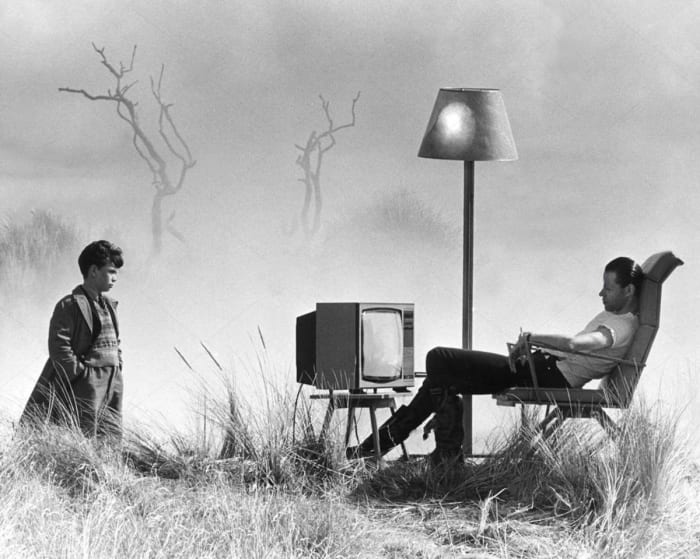
Despite being the album that generated Pink Floyd's only chart-topping pop hit ("Another Brick in the Wall, Part 2"), it's amazing how many people were still drawn into the darkness, the sadness, and the genuine gravity to Roger Waters' complex tale of a rocker who can't let his emotional walls down. While "The Wall" is a classic album, few knew if a filmed version could even come close to articulating the record's emotional intricacy. Writing the screenplay to which Alan Parker would later direct the 1982 film, "The Wall" enhances the album by marrying the many pioneering rock songs to set pieces that are surreal as they are effecting. Often dropping into wild and at times offputting animation (courtesy of Gerald Scarfe), "The Wall" is a depressing but compelling experience, showing how the rocker Pink (Boomtown Rats' Bob Geldof) tries but is unable to process the traumas in his life, mounting so high that he crumbles in their shadow. Featuring some of the band's best music and some sequences that will burn themselves into your retinas, few films have the lasting power of "The Wall".
#5: Prince – "Purple Rain" (1984)

As a narrative, "Purple Rain" isn't great. The story of The Kid (Prince) feuding with his bandmates while losing crowds to the flashy Morris Day & The Time isn't all that fascinating, and the way women are treated in the film ranges from misogynistic to abusive. Yet against all the odds, "Purple Rain" is and continues to be one of the best music films ever made because a once-in-a-lifetime performer like Prince is working that camera at the absolute peak of his powers. He may not be much of an actor, but whenever Prince is on stage, it's impossible to take your eyes off of him, resulting in a litany of iconic sequences. From his sex-crazed yearning for Apollonia on "Darling Nikki" to his sizzling dance moves during "I Would Die 4 U" to the film's emotional crescendo when he finally plays bandmates' Lisa & Wendy's guitar riff on the title track, thereby bringing his friends together, "Purple Rain" defies its modest screenplay to become a celebration of the way pop music and cinema can so deftly work together to create iconic experiences.
#4: iamamiwhoami – "kin" (2012)

After grabbing the world's attention with the mysterious videos that made up the "bounty" visual album, iamamiwhoami's Jonna Lee streamlined her approach for her second, resulting in the arresting yeti puzzle-box that is "kin". Featuring Lee crammed into a studio flat only to find and be embraced by a world of tall hairy creatures who are prone to dance, "kin" lays down its laser-sharp aesthetic easily and confidently, drawing viewers into a carefully constructed world where the music and visuals wouldn't be the same without each other. From dressing up as a Wookie madam to giving us ridiculous one-woman harlequin choreography, "kin" marries its eye-grabbing images to some of the best electro songs released in the last decade, with the slow-melting synths of "play" to the cooed catharsis of "idle talk" to the otherworldly would-be pop hit that is "goods" all sounding like a greatest hits record from an artist many have never heard of before. It's a monumental release that still feels just as fresh as it is overlooked even a decade after its release.
#3: Bo Burnham – "INSIDE" (2021)

In the early stages of the global lockdown caused by Covid-19, several people turned to newfound crafts and hobbies while others spent isolation focusing on themselves. For artists, this meant there was an excuse to make films or albums or any manner of projects that were either long put off or freshly inspired by quarantine. For comedian and filmmaker Bo Burnham, this meant exploring his own deteriorating mental health, grabbing a camera and a synth pad to film himself turning 30 years old in an empty house with no one to celebrate it with. An ambitious film that was crafted as it happened, "INSIDE" is a personal document with few peers.
Self-deprecating in approach, sarcastic in tone, and rife with riffs on the failures of entertainment media (all Burnham trademarks at this point), "INSIDE" struck a chord with viewers due to its genuine comedic moments as well as its painfully raw nerve emotion. Easy fluff sequences like "White Woman's Instagram" and "Sėxting" helped lure viewers in, but the feature's dark second half is gut-wrenching, with genuine hits like "That Funny Feeling" and the anthemic "All Eyes On Me" going on to define the second of year of the pandemic. Rightfully acclaimed but still mocked by the irony-poisoned, "INSIDE" is one of the rare pieces of quarantine filmmaking that worked, a cultural touchstone that will outlive most of us.
#2: Daft Punk – "Interstella 5555: The 5tory of the 5ecret 5tar 5ystem" (2003)

Daft Punk's 2001 record "Discovery" has gradually become one of the most influential albums of all time, as the French techno duo's aesthetically precise brand of techno-pop was celebrated upon initial release, but its influence has only grown with each passing year. Conceived while the album was in development, "Interstella 5555: The 5tory of the 5ecret 5tar 5ystem" is a full-bore anime film that served as the album's delightful visual counterpart. Telling the story of an alien band that is kidnapped and brainwashed by an evil record producer, "Interstella 5555" introduced many Western fans and casual MTV viewers to the power of Japanese animation and just how colorful and wild it can be. Carefully plotted with every frame filled with clever details, few visual albums are as instantly memorable and endlessly rewatchable as "Insterstella 5555". Of course, the fact that it's perfectly synced up with one of the greatest full-length dance records ever doesn't hurt either.
#1: Beyoncé – "Lemonade" (2016)

There is no single reason why "Lemonade" is the greatest visual album of all time, and therein lies its strength. Surprise-released as Beyoncé is wont to do nowadays, "Lemonade" serves as a compelling piece of art and the kind of record that only someone of her superstar status could produce. Inspired by the infidelities of husband Jay-Z, "Lemonade" could have easily been a fiery breakup record and nothing more, but Beyoncé knows that emotions associated with being cheated on run deeper than mere vengeance.
Part of Beyoncé's strength as an artist is how private she is in her personal life, meaning that when she wants to say something, everyone will listen, and that exclusivity helps fans fill in any gaps in the "Lemonade" saga. The cinematic element does what the best visual albums do by working as a standalone feature while never robbing individual songs of their spirit or independence; the clip for "6 Inch" works both in the context of the narrative and as a standalone video. Seeing her emerge from a sea of water in "Hold Up" only to bash in cars with a baseball bat and take out petty revenge on the world is deeply satisfying, but by the time she reconciles with Jay on "Sandcastles", it's clear that the couple's emotions run deeper than we know. She integrates footage from her family life, features powerful Black women like Serena Williams front and center, and gives space for the mothers of Trayvon Martin, Michael Brown, and Erin Garner to have their stories represented.
With "Lemonade", Beyoncé picks up the stereotype of the scorned woman and subverts it at every turn. She reads the stark poetry of Warsan Shire as if it's her own and replaces the open sexuality of her 2013 self-titled album with independence, fierceness, and ultimately, acquiescence. "Lemonade" still is subject to analysis and interpretation all these years later, and songs like "Sorry" work both in the club and in one's own private release. There may be more striking visual albums out there, but none have the depth, care, or artistry that "Lemonade" has.
Evan Sawdey is the Interviews Editor at PopMatters and is the host of The Chartographers, a music-ranking podcast for pop music nerds. He lives in Chicago with his wonderful husband and can be found on Twitter at @SawdEye.
More must-reads:
Trending in Entertainment
Customize Your Newsletter
 +
+
Get the latest news and rumors, customized to your favorite sports and teams. Emailed daily. Always free!
Use of this website (including any and all parts and
components) constitutes your acceptance of these
Terms of Service and Privacy Policy.

